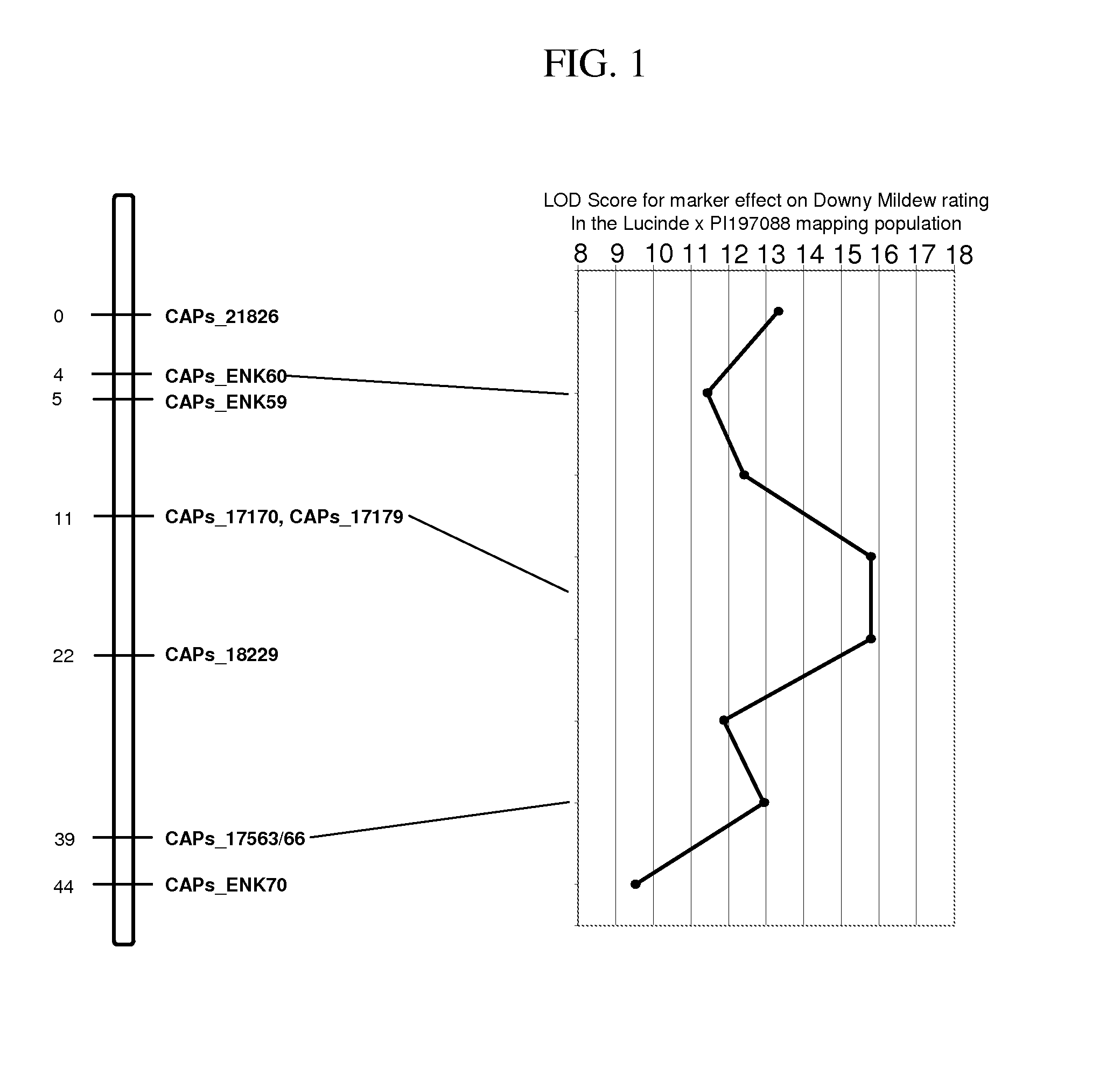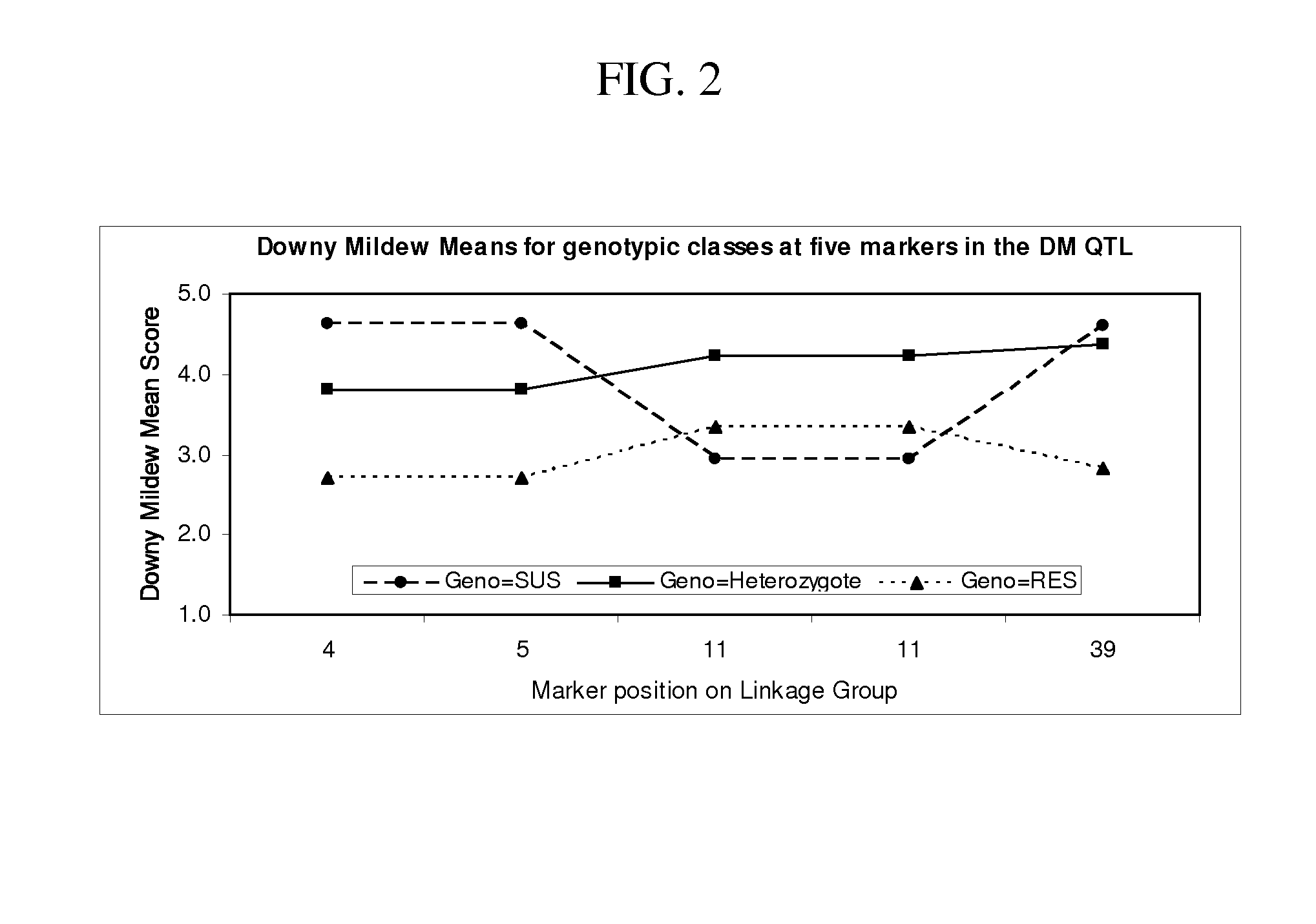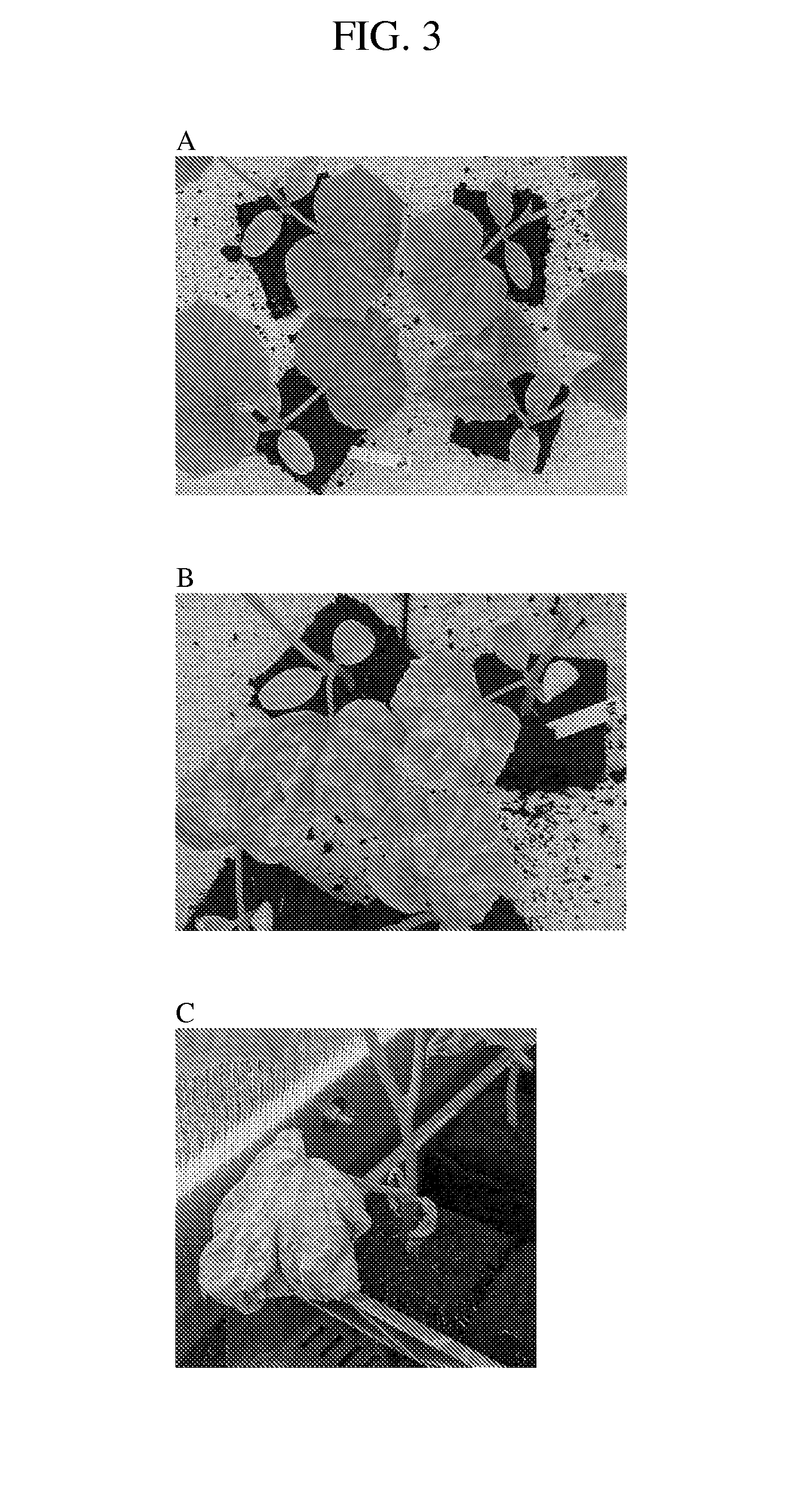Methods and compositions for identifying downy mildew resistant cucumber plants
a technology of cucumber plants and compositions, applied in the field of methods and compositions for identifying and breeding cucumber plants having downy mildew resistance, can solve the problems of reducing fruit yield and quality, affecting the yield of cucumber plants, and affecting the quality of cucumber plants,
- Summary
- Abstract
- Description
- Claims
- Application Information
AI Technical Summary
Benefits of technology
Problems solved by technology
Method used
Image
Examples
example 1
Downy Mildew Culture and Disease Screening —Field
[0141]Pseudoperonospora cubensis (Berk. et Curt.) Rostow is an obligate pathogen. Therefore, it must be maintained on live plants of a susceptible cucurbit. Two isolates were used in screening for resistance in this study. The “old” isolate of P. cubensis is characterized by its pathogenicity on both squash and cucumber. The “new” isolate of P. cubensis is not considered pathogenic on squash but is very pathogenic on cucumber. The pathogen was stored by freezing leaves or cotyledons with abundant sporulation at −80° C. Although there may be some loss in spore viability inherent in the freezing process, no decrease in viability over time once spores are frozen, has been found. Six weeks before spreader host plants were to be transplanted in the field, susceptible cucumber hosts were planted in a controlled environment chamber. At three weeks they were inoculated with a spore suspension derived from infected leaves stored in a −80° C. f...
example 2
Downy Mildew Culture and Disease Screening—Greenhouse
[0145]Pseudoperonospora cubensis (Berk. et Curt.) Rostow, as described and stored above in Example 1, was also used for greenhouse screens. Two weeks prior to screen inoculation, susceptible cucumber hosts were sown in seedling trays. At one week post planting, the seedlings are inoculated with a rate of approximately 5×104 sporangia / ml. The inoculated hosts were then placed into a growth chamber and maintained for seven days at about 70° F. After seven days, the seedlings were placed into a dew chamber overnight to induce sporulation. This culture was transferred onto susceptible cucumber hosts on a weekly basis.
[0146]Cotyledon screens were planted in seedling trays. Susceptible and resistant checks were planted on both sides of each tray. Plants were seeded and maintained in a greenhouse at 80° F. Inoculation was conducted at 7 to 10 days for cotyledons and at the 5th leaf stage for true leaves. Plants were inoculated by misting...
example 3
Introgression of DM resistance into Cucumber Lines
[0148]Downy Mildew resistance identified in the Plant Introduction line PI197088 was found to be stable in multiple screening locations worldwide and against both older (pathogenic on squash and cucumber) and newly emerged (not considered pathogenic on squash and very pathogenic on cucumber) isolates of P. cubensis. However, both plants and fruit of PI197088 are commercially unacceptable. A locus contributing to Downy Mildew resistance in PI197088 was mapped with molecular markers as described in Example 4. A total of about 128 cucumber lines were separately screened using one or both DM isolates. DNA was isolated from resistant lines to screen for marker polymorphisms between the donor and recurrent parents.
[0149]Included in these screens were cucumber varieties Conquistador, Crispina, DMP21, and PI197088, among others, which are resistant or intermediate-resistant. Also included were Colt, Sprint440, Talladega, Lucinde, and Serena,...
PUM
 Login to View More
Login to View More Abstract
Description
Claims
Application Information
 Login to View More
Login to View More - R&D
- Intellectual Property
- Life Sciences
- Materials
- Tech Scout
- Unparalleled Data Quality
- Higher Quality Content
- 60% Fewer Hallucinations
Browse by: Latest US Patents, China's latest patents, Technical Efficacy Thesaurus, Application Domain, Technology Topic, Popular Technical Reports.
© 2025 PatSnap. All rights reserved.Legal|Privacy policy|Modern Slavery Act Transparency Statement|Sitemap|About US| Contact US: help@patsnap.com



